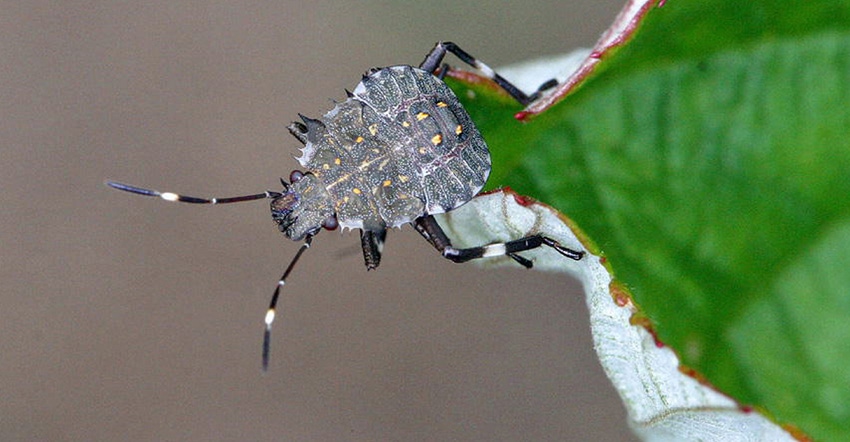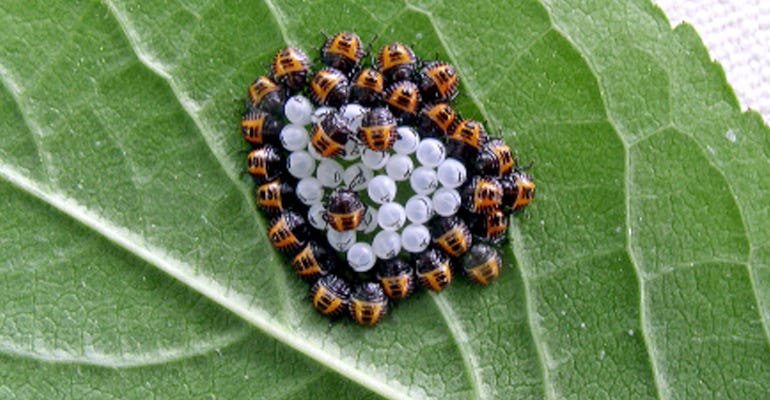
The invasive brown marmorated stinkbug is in Missouri, and university entomologists need farmers' help to find them.
The brown marmorated stinkbug (BMSB) is native to Asia, but it appeared in 2001 in the U.S. in Pennsylvania. Exactly when the pest arrived in Missouri is unknown. However, in 2017, University of Missouri Extension entomologist Kevin Rice captured some in a soybean sweep at MU’s Bradford Research Center.
Brown marmorated stinkbugs now are confirmed in seven counties across the state. “But that is an underestimate,” Rice says.
Homeowner calls regarding the pest increased last year. “This is usually the first detection that the bug is here,” Rice explains.
After the population establishes in residential areas, it spills over to agriculture. This species is prolific and feeds directly on soybeans and corn causing aborted seeds and deformed kernels.
Basic characteristics
The pest’s distinguishing characteristic is the white banding on its antenna and abdominal area. “If you see a stinkbug with white banding, it is invasive,” Rice explains.
The female lays eggs on the underside of leaves, about 28 eggs at a time. The first instar looks like ticks. However, each instar has the signature white band.

NOT A TICK: A quick look underneath a leaf may have farmers thinking this is a cluster of ticks. Not true. It is the first instar of the brown marmorated stinkbug. Once mature, the pest feeds on soybeans and corn, reducing yield.

The brown marmorated stinkbug feeds on hundreds of different host plants. Compounding the issue is it has a high dispersal capacity.
“Females can fly up to 80 kilometers per day,” Rice says. “They are constantly moving and balancing their diet by feeding on different plants — fruit one day, field crops the next — making control difficult.”
Control the pest
Rice says farmers can narrow their scouting parameters.
Brown marmorated stinkbugs feed along the edges of soybean fields. “It doesn’t go into the field too far, since it is able to fly and feed on different plants every day,” Rice says.
Crop fields with trees or brush are prime locations for this stinkbug. “It is the only one that can feed directly on woody plants,” Rice adds. The pest tends to feed on trees, then drops into the closest crop field and feeds more.
Rice says harvest is when most field crop farmers realize they had a pest problem. “Farmers may see significant yield loss from BMSB around the edges,” he explains. His advice? Scout field edges often.
In soybeans, a count of 36 bugs per 100 sweeps is the threshold for insecticidal sprays. On average, Missouri has two generations of brown marmorated stinkbugs. Peak time for spotting the bug starts in August.
How to help
Since brown marmorated stinkbugs are relatively new to the state, Rice is searching for farmers willing to place clear, sticky traps along their soybean field edges. “The trap might be an easier way to determine brown marmorated stinkbug populations in the field instead of sweeping during the season,” he says.
For information on becoming involved in trapping the brown marmorated stinkbug this summer, email Rice at [email protected].
About the Author(s)
You May Also Like






